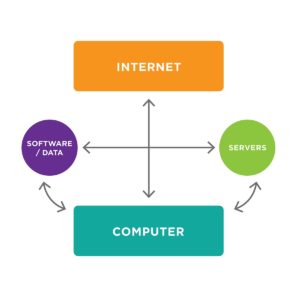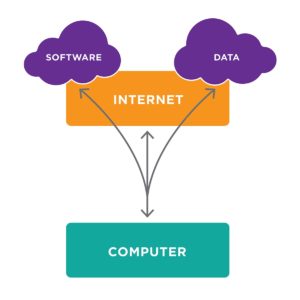SEO for Regular Folks Who Post
(like you and me)
For anybody working even remotely close to a website in today’s world, SEO is a term that is most likely heard on a consistent basis. SEO stands for Search Engine Optimization and in today’s technology-driven world, it is a term that most business owners need to know. Essentially, it refers to the art of having your website rise to the top of search engine rankings and having it stay there using legitimate means. However, as much as SEO might hold a certain prominence in today’s business landscape, it is not always clearly understood. Much of this has to do with which side of the IT fence you stand on (Tech God vs mere-mortal-with-no-clue) as well as the mystery surrounding how search engine ranking is even determined. Before we get into any of that, let’s start with a short history of where it came from and what it looks like today.
A Short History of SEO
For approximately as long as there has been a recognizable internet with search engines (let’s start around 1994), there have been ways of evaluating the sites that have appeared there. Webcrawler, in 1995, was one of the first to actually index sites, and in 1998, Google introduced Page Rank. With Page Rank, Google began using certain factors to determine the ranking of a webpage in relation to others in its search results. Fast forward to today, and Google is the search engine that the majority of internet users go to (up to 94% of mobile users, a little bit less for desktop) and it is the main company determining ranking.
Google, however, is a bit of a black box and it does not publicize how it determines which websites are better than others. Their probable criteria are suggested to the public by SEO specialists who watch the web and Google’s rankings and then communicate what they are observing. Google changes their ranking formula approximately 400 times per year, which makes it hard to stay on top of expectations. In the past, Google rated pages based on the different kinds of links that were associated with it, as well as keywords, to name just two factors. Much of their old criteria have evolved, however, as many companies were using dubious techniques (also known as black hat) to try and create a trustworthy standing in search engine rankings. For example, when Google looked at how many links you had going to and from your page, they would give your page a higher value based on quantity alone. Google started to notice that people were buying links to dubious pages and creating connections to sites that had no substance, thereby floating their page to the top of the ranks but with no real value to the User. Google has since started to institute penalties for this kind of behavior (see more below) and, if it sees that you are doing this, you will not only fall in the ranking but your page will be remembered for this behavior.
What we do know today, in 2016, is that Google is emphasizing content and quality as well as User Experience, and the ability to reach the top of their list requires consistent effort and awareness, even while competing within undefined expectations. So, if you want to achieve a legitimately high Google ranking, how do you go about it? Well, part of that depends on how closely you work with the creation and maintenance of a website (i.e. how much of an IT person you are). Let’s take a look first at what to do if you are non-IT (regular folks who post, just like you and me!)
SEO for non-IT
First, let’s talk about algorithms and bots. What? Yes, we have to mention a few “whats” before we can get into the “hows” or even the ”whys”. An algorithm is a process or set of rules that needs to be followed in order to solve a problem, in this case the ranking of webpages by Google. And bots? Well, bots are simply software applications that perform automated tasks on the Internet at a much faster rate than humans could. In terms of search engine ranking, Google runs its algorithms through bots which it sends out to the Internet as web crawlers (or spiders) to gather and analyze the information they find on webpages. (That’s a nice image, isn’t it? A bunch of computerized spiders running around the inside of the internet, gathering info that it brings back to Google!). These spiders also take copies of the pages they visit which helps with the subsequent indexing of pages and increases the speed at which users can access them.
If you are a regular person who knows they need to make these spiders happy in order to achieve a high ranking, what can you do? Here are some ideas:
1. Content: One of the biggest areas of potential is to consistently post quality content on your site so that Google’s spiders are kept “fed”, always finding something new on your page (while keywords still hold some value, don’t follow the old practice of stuffing your text with them, but do create fresh content that Google will recognize as helpful or beneficial to the User);
2. Images: Using images and videos also helps a lot as Google sees that you are creating something that has substance and is probably useful;
3. Links: Another, more challenging factor is links. In terms of honest links, they are a challenge to obtain and one that you need to consistently work at. The best kind of inbound links would be from government or large business/organizational pages that reference you. Did you write a great blog post that was referenced by a popular and respected trucking magazine? That’s a great link to have and Google will recognize this. The more you establish yourself (or your page) as having value to those who go to it, the higher you will rise. These links, however, cannot come from passively purchasing them or linking up to websites with no value. You actually have to develop this type of value from being active within your community, whether that be your actual location or industry. The more people who know about you and cite you in some way or another, the better. And, conversely, the more you are active on other sites, the better. In this latter case, you can do guest posts, reference other sites, maintain a social media presence, etc.
SEO and what the IT Department can do
Above, we spoke about what non-IT people could do to help create strong SEO. Here, we are going to talk (in as non-technical a way possible) about some of the ways that an IT department can be working to increase the SEO-ness of a page. All of the items listed below are little “bites” that the spiders consume on their way through the web, and they are all known ways that Google uses to rank pages. When a page is created for a website, the IT Department should be building the page based on certain SEO principles:
1. Titles: The design of the site should include accurate titles that convey the content, in a brief, concise manner (Google only shows a certain portion of titles in its search);
2. Meta tags: There are ‘meta tags’ used in the creation of a page that describe its content, and Google sometimes uses these in its own description in the search ranking. The better a tag that is created, the greater benefit is created in rankings later on;
3. URLs: URLs are a big one: a long, “technical” URL with characters indecipherable to a regular person could easily get cut off at the wrong place if someone is copying and pasting into a browser. A search engine (and a regular person) will more easily “read” a site as attractive if it can see from the URL what it is about. Also, URLs are displayed in search results ;
4. Mobile: Mobile compatibility is paramount: the world is turning towards mobile more and more, and a site that is not mobile-compatible can lose ground with Google. Since 2009, and with much greater emphasis since 2015, Google has been ranking mobile-friendly sites higher than those that don’t read well on that platform.
SEO and marketing
Now that we know some of the basics of SEO, where it came from and how we can implement a strategy to achieve a positive search engine ranking, it might be a good idea to talk about why this is important.
Consumers are overwhelmingly going to the internet to find what they need, in almost every industry. When they look for things in a search engine, they generally look to the first 5 choices presented, and don’t go much further. It is almost certain that they will not progress past the first page, even if they do not find precisely what they are looking for. Google’s searches really help determine, then, where people are getting their product, whether it be the address of a restaurant or who is selling an engine assembly. If a strong SEO effort is a part of your marketing strategy, you might very well end up at the top of the rankings and that on its own has almost immeasurable value.
In terms of understanding why internet search rankings are so important, it might be useful to look at some numbers that point to the growing influence of ecommerce in our world:
In 2015, Statista reported that 80.97% of the American population used the internet. In 2015, the Pew Research Centre reported that 68% of Americans had smartphones, and that 45% had tablets, laptops or desktop computers. Statista also reported that, in 2015, 171.8 million people bought goods and services online in the United States: that is approximately 54% of the population. Cisco Systems has predicted that global traffic will increase threefold by 2020, that smartphones will overtake PCs in that timeframe, and that wireless and mobile will be 2/3 of total traffic. If you are unsure of the importance of ecommerce, or hesitant about its future, these statistics should indicate how our world has changed and continues to change, and that web-based marketing is not a luxury, but rather a necessity.
When TPI is your IT Department
Finally, let’s take a look at TPI in relation to SEO. If you are going to invest in an internet-based software system in order to sell your product, it would be helpful to know what is offered in terms of keeping your products at the top of the rankings.
If you choose TPI to be your software for your parts business, you are not only investing in a leader in inventory software, but also in a company that is keenly aware of the importance of SEO in terms of your company’s bottom line. TPI itself has a consistently strong online presence, based on history and expertise, that allows it to maintain a top-level position in search engine rankings: this on its own holds great value in terms of associating your business with our brand. Our IT Department, however, also ensures certain important strategies are implemented when developing and maintaining the site. For example, you can be assured of the following:
1. TPI site architecture features a design that presents the freshest, highest quality content on top. The web crawlers will understand that there is constant activity and that there are continual updates with substance;
2. TPI is mobile-friendly, an extremely important SEO feature as Google recognizes that platform’s importance and rewards those who implement it in their sites;
3. TPI leverages cloud search technologies in terms of speed, another area that Google likes to reward with higher rankings;
4. We ensure solid titles and URLs, as well as a keyword strategy, in order to give the site basics a strong presence;
5. TPI has an architecture that ensures that the majority of content is discoverable in just a few clicks: another feature that the Google spiders like to see.
There are many other ways that TPI helps optimize your company’s position in the rankings, but these are 5 important examples. Should you choose to work with TPI, we will work with you, guiding you in the different ways you can increase the credibility of your product on our pages.
SEO is a subject that could be written about endlessly, in part because Google’s determination of ranking is a secret, and partly because it is a new and rapidly evolving practice, just like so many things in today’s world. To stay current, you need to stay committed and attentive. We hope that we have provided a useful primer here on the subject, and shown that, even for the non-technical amongst us, SEO doesn’t have to seem overwhelming or unwieldly. While implementing a strong SEO strategy does requires certain key technical components, there are some very important aspects that can be accomplished by almost anyone, including you and I. Rising to the top of the search engine rankings doesn’t happen overnight, but with consistent effort and attention, you might just get there.



